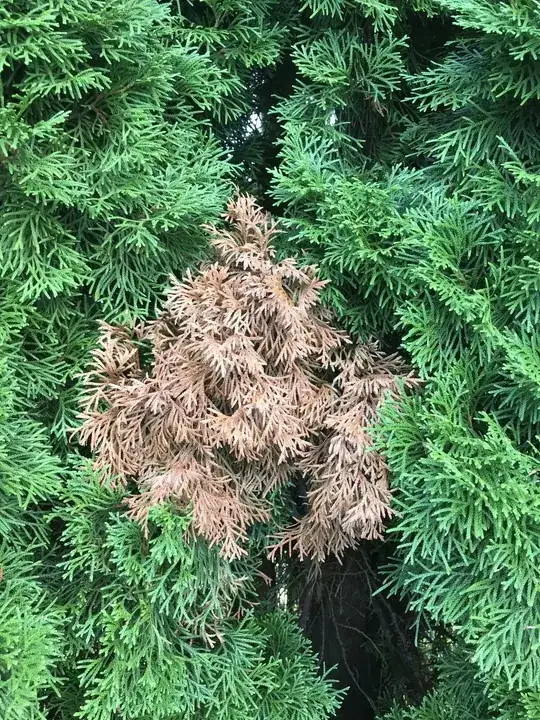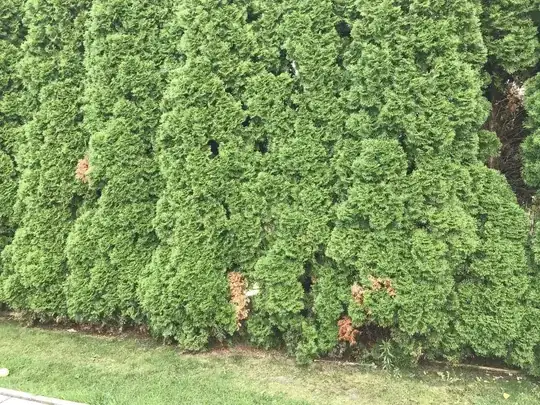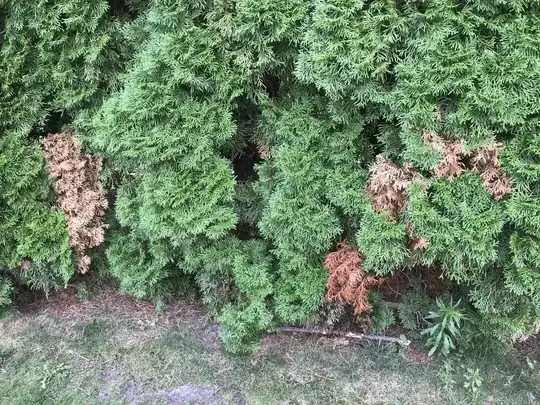@Kevinsky provided a link in their answer to a similar question that you may find helpful - the specific link is from the Morton Arboretum and discusses seasonal needle drop. It also says that, in times of drought, evergreens will lose needles or, in the case or arbs, branchlets., which is what your arbs are doing.
I think your issue may be with watering, especially if your regimen was interrupted for some reason (vacation, for example). Established arbs should need no more than 1 inch of water a week, preferably a one-time-per-week event (like a large storm).
I don't have any science results to give you, but I can cite a great resource: Michael Dirr's "Manual of Woody Landscape Plants" (5th edition). This is a common tectbook in university and college horticultural classes. Here's what he says about Thuja accidentalis:
Culture
... should be grown in areas of considerable atmospheric moisture as
well as soil moisture; requires a deep, well-drained soil...
so far, matches what your gardener says. But - just a couple of dozen word later and in the same entry:
...in spite of the absolute admonitions about this species and
cultivars, it will, once established, take considerable heat and
drought; all over Cadillac Mountain, Maine, growing in rock crevices
and exposed slopes.
As you can see, the text apparently contradicts itself. It doesn't, however: a young, newly planted arb needs a lot of water (and should be watered in well late in the year just before ground-freeze) in order to get established. Once established, though (after two summers in the ground, I'd say), then it doesn't need much if any additional water.
T. occidentalis is native east of the Mississippi and north of the Gulf states, so if you're in that area of the US (I'm assuming you're in the US), then you don't need to add any additional water. If you live west of the Mississippi, then you may need to supply additional water, but really, no more than an inch a week.
So, why the emphasis on watering? Because there isn't much else that could be causing the browning, except perhaps spider mites (which should be relatively obvious). The other reason for thinking it might be over-watering is that an extremely well-watered tree, such as your trees, will develop extraordinarily shallow roots; if the watering schedule is changed even a fairly little bit then the roots aren't deep enough to supply the tree with the water that's available.
If you want to change the watering schedule and amounts, I suggest you do so very slowly. Maybe cut off the overhead watering first (reduce to once a month, then eliminate), and then cut back on the irrigation a little at a time. I'd do this over a period of many months over perhaps two growing seasons. This will allow the roots to "sink" to a proper depth.



